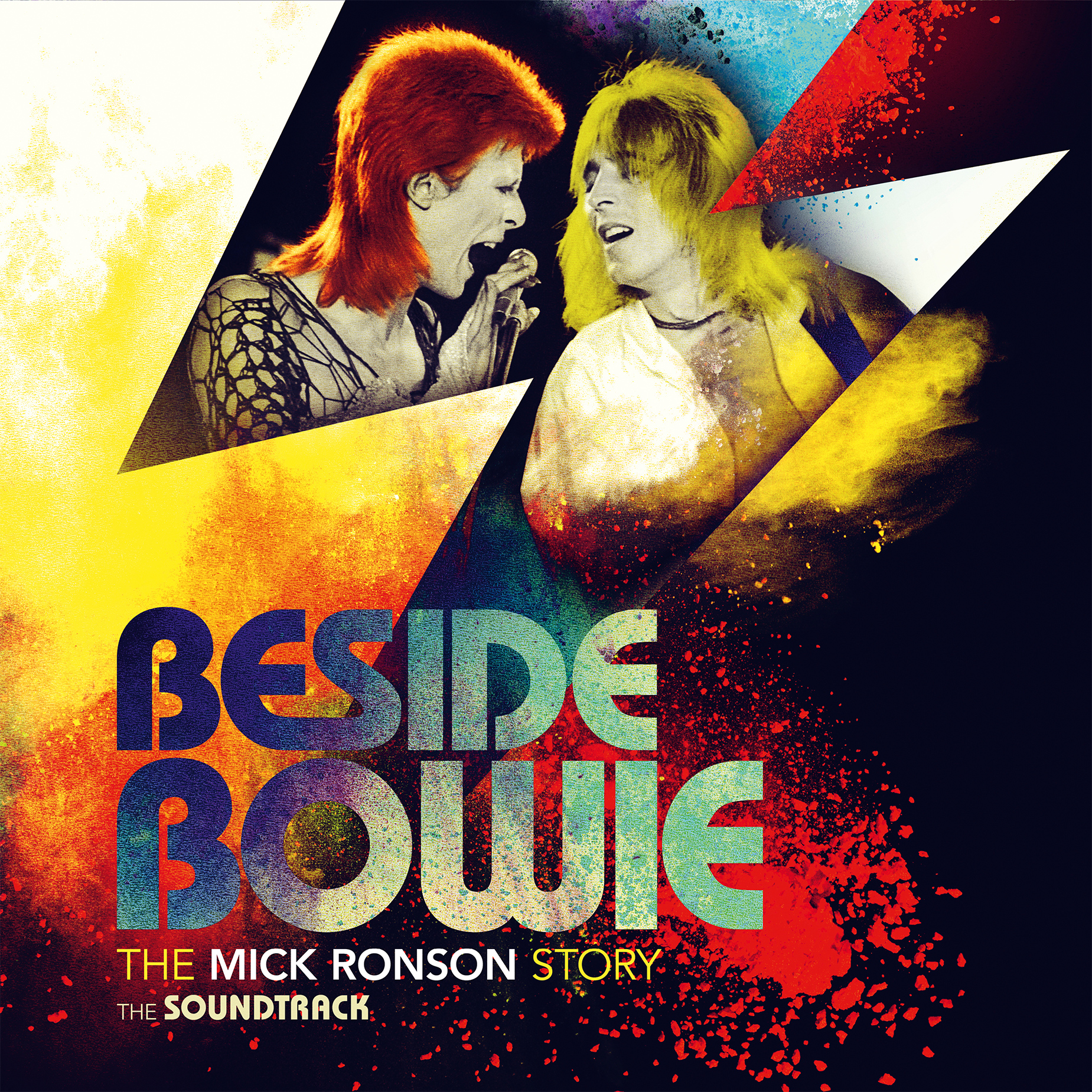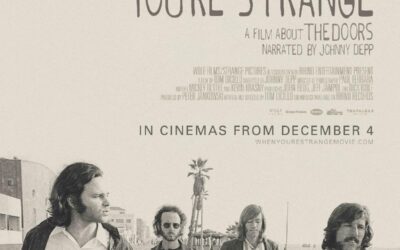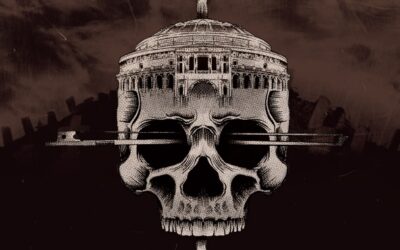AVAILABLE NOW VIA UME
By Harvey Kubernik c 2018
Record label UMe this summer has released the soundtrack to the official Mick Ronson documentary, Beside Bowie: The Mick Ronson
Story, with tracks by Mick Ronson, David Bowie, Ian Hunter, Michael Chapman, Joe Elliott (Def Leppard), Elton John and Mike Garson.
This is the first official career retrospective compilation for the guitar virtuoso Mick Ronson. The compilation includes key selections from Ronson’s solo records, as well as material from noted collaborations with David Bowie, Elton John, Ian Hunter, Queen and Michael Chapman plus previously unreleased and unheard songs.
The soundtrack is available on CD, Digital & heavy-weight 180-gram vinyl and includes extensive essay and liner notes. The soundtrack accompanies the critically acclaimed film Beside Bowie: The Mick Ronson Story also available on DVD and Blu-Ray.
Beside Bowie: The Mick Ronson Story
Def Leppard front man Joe Elliott has provided a touching video tribute to his friend and early guitar hero, the late, great legendary musician Mick Ronson. Filmed in the midst of his band’s recent sold out North American stadium tour, the video opens with a film projector projecting cinematic footage of
Elliott performing Ronson’s ballad “This Is For You” on acoustic guitar in various locations on the road as archival photos and vintage black and white footage shows Ronson performing solo and with long time musical partner David Bowie.
Offers Elliott. “This video is my gift to the memory of Mick Ronson who gave me so much in my youth and then later on when we got to know each other.”
Watch “This Is For You” here: https://www.youtube.com/watch?v=bawf8e_ZWAM
The video was unveiled on August 25 on the 46th anniversary (8/25/72) of the filming of David Bowie and the Spiders from Mars’ shadowy and subversive video for “John, I’m Only Dancing.”
Directed by rock photographer Mick Rock, the video featuring Bowie and the band in their best glam attire and androgynous dancers, was banned by Top of the Pops in the U.K. and was never released in America as it was deemed too risqué by the record label.
Elliott first became a fan of Ronson’s as an adolescent entranced by Bowie’s breakthrough album Ziggy Stardust and the Spiders from Mars.
“I just wanted to give something back, because I was the kid that when I was 12 years old, staring at the inside sleeve of ‘Ziggy Stardust,’ four squares of Bowie and the Spiders, I would be staring at Mick as much as I was staring at Bowie – it was the Jagger-Richards thing. It was Page-Plant; it was Perry-Tyler,” Elliott told Salon earlier this year about recording the song.
Elliott and Ronson developed a friendship after meeting in the early ‘80s which lasted until Ronson’s death in 1993 from cancer. Elliott helped Ronson record his final record and sang on two tracks. After Ronson passed, Elliott finished the album for him and Heaven And Hull was posthumously released in 1994.
Despite his production and guitar work with Lou Reed, Morrissey, Ian Hunter and Mott The Hoople, Bob Dylan, John Mellencamp and many others, it is Ronson’s riveting support, contribution, and co-creation of the expansive and multi-faceted career of Bowie and in fact that era of music, that the film and the soundtrack exposes.
Featuring exclusive narration by Bowie and exclusive contributions by Rick Wakeman, Joe Elliott, Roger Taylor, Ian Hunter, Angie Bowie and many more, the career-spanning documentary Beside Bowie: The Mick Ronson Story, produced and directed by Jon Brewer, is a tribute to an uncomplicated man who achieved the pinnacle of success in the music industry as well as the rarefied respect from his contemporaries for his production and guitar skills.
During July of 2008 the Virgin/EMI record company issued David Bowie: Live Santa Monica ’72 in limited edition CD and numbered 180-gram vinyl double-LP packages, culled from the original 1972 KMET-FM (94.7) live radio broadcast in Southern California
In 1972, David Bowie embarked on his debut U.S. tour. He’d recently introduced the world to his Ziggy Stardust persona with his album, The Rise and Fall of Ziggy Stardust and the Spiders from Mars, and he had completed a successful U.K. slew of live dates.
Joining Bowie on the journey were his exceptional band, The Spiders From Mars: Mick Ronson – guitar, vocals; Trevor Bolder – bass; Mick “Woody” Woodmansey – drums; and Mike Garson – piano.
If you really want to HEAR what Mick Ronson provided to the sonic journey of Bowie’s songs in recital, take a listen to this audio document.
The repertoire is compiled largely from Bowie’s Hunky Dory and Ziggy Stardust albums and features two covers, Jacques Brel’s “My Death” and the Velvet Underground’s “Waiting for the Man.” In addition, the set features the absorbing “Man Who Sold the World” centerpiece, “The Width of a Circle,” (a ten minute joy ride) and an advance preview of “The Jean Genie” that was to surface on his Aladdin Sane LP.
It was a commercial item very briefly on CD in the mid-’90s, but long since out of print, the riveting appearance captured on David Bowie: Live Santa Monica ’72 is a must own for music historians, record collectors and the uninitiated.
In a 1981 poll, NME music critics proclaimed “(quite simply)… the performer’s, and one of rock’s, best ever bootlegs.”
I went to Bowie’s October ’72 event at this venue which I fondly rank in my Top Five all time fave rave concerts.
David Bowie himself is also particularly fond of the evening’s recording.
“I can tell that I’m totally into being Ziggy by this stage of our touring. It’s no longer an act; I am him. This would be around the tenth American show for us and you can hear that we are all pretty high on ourselves. We train wreck a couple of things, I miss some words and sometimes you wouldn’t know that pianist Mike Garson was onstage with us, but overall I really treasure this bootleg. Mick Ronson is at his blistering best.”
I met Michael Ronson and his then wife Suzanne Fussey once in 1973 at Duke’s coffee shop located at The Tropicana Motel. He said, “I’m Mick from Hull,” a town in England. I replied, “I’m Harvey from Hollywood.”
I later interviewed David Bowie on the set of The Cher Show at Television City inside CBS studios on Beverly Blvd. and Fairfax Ave. in Los Angeles for the October 25, 1975 issue of the now defunct Melody Maker.
The night before the Cher taping, Bowie was laying down some demos at Cherokee studios on Fairfax where we listened to a playback of “John, I’m Only Dancing,” This reworking has a refined disco beat.
“The difference between film acting and stage acting is enormous,” stressed Bowie. “On stage you are in total control, whereas in a film the actors are instruments of the director. I think a stage performance is more of a ceremony and one plays the high priest. But in a film you are evoking a spirit within yourself. You feel a tremendous responsibility of having the power to bring something to life. For example Major Tom in ‘Space Oddity.”
In September 2018 I asked some friends and longtime Bowie and Mick Ronson fans to reflect on the dynamic duo.
“What was different about Bowie’s band was that it was rock, aware of itself in that sophisticated way that we hadn’t seen or heard ever on a mass scale, and that we hadn’t seen really in that way maybe ever,” suggested Dr. James Cushing, of KEBF-FM in San Luis Obispo, California who attended live 1972 Bowie shows, in California and in Manchester, England.
“I thought the band looked absolutely fantastic, and they moved with absolute precision. I can still see it. They supported Bowie’s songs so well because they were so well drilled and so well-rehearsed that it was really like seeing an expert theater company from the Royal Academy of Dramatic Art. So the songs performed are all a part of a dramatic presentation, and you can see the drama by the structure of the songs in the set list,” Cushing continued. “He’s playing a character. Ziggy works as a concept album because he becomes the main character within the concept.
“Mick Ronson is economical and kind of a revisionist, the way the Ramones’ guitarists were revisionists, although he played long solos on a couple of songs. He did have his own style that was aware of rock as a language familiar enough to be employed in the service of a theatrical statement. In other words, he is stating ‘now rock ‘n’ roll guitar has its own language.’ There are guitar pioneers from Scotty Moore all the way up to the death of Jimi Hendrix – Robert Fripp and others, and what Ronson is saying is, ‘OK. All of these people have been clearing this amazing new territory for the electric guitar. Good. Now that the territory has been cleared, what can we build in this territory?’”
“Like Michelangelo said, ‘Beauty is the purgation of superfluities,’” volunteered wordsmith Daniel Weizmann. “In the age of Jimmy Page and Eric Clapton, when showy mastery was the barrier to entry for rock music, Ronson stripped the vehicle down to the engine and the four wheels. The screeching take-off that follows ‘Wham! Bam thank you ma’am!’ on ‘Suffragette City’ electrified a zillion car radios and set us on a collision course to punk rock.
“When Ziggy and the Spiders’ spaceship landed, I was familiar with, but hadn’t yet witnessed David Bowie in the flesh,” recalled writer and diarist Marina Muhlfriedel.
“Then, a schoolmate and I got tickets to what would be a life-altering show on May 12, 1973 at Earl’s Court Theatre in London. Although it was technically a Bowie show, it had none of the lead singer/backup band formality I anticipated. With those mythic songs, provocative androgyny and startling performances, Bowie and guitarist Mick Ronson infused each number with a blast of originality and conviction that merged the duo into a singular exquisite organism, rendering the music impossibly big and catapulting glam and, in fact, live rock ‘n’ roll of any persuasion, to a level never before conceived.
“There was a power and authority to Ronson that provided the gender-bending show its mighty testosterone underpinnings. His guitar lines were as indelible as and, at times, out-weighed the vocal melodies on songs like ‘Moonage Daydream’ that wrapped up with one the most blistering solos ever. Ronson’s playing was never random. No sacrificing song for indulgent tangents. As an arranger, producer and multi-instrumentalist, he embodied a level of precision that, looking back, was not only vital to his work with Bowie, but also Mott the Hoople, his solo albums and, monumentally, Lou Reed’s Transformer, in which his deft orchestral elements served as the perfect counterbalance to Lou’s poetic grit.”
“On his KLOS-FM radio show, Sex Pistols’ guitar hotshot Steve Jones used to tout Mick Ronson as the best of the best who influenced him,” emphasized photographer Heather Harris.
“Perhaps some of these plaudits stemmed from Ronson’s reputedly genial personality, which gave those who knew him an unfair advantage. One thing Ronson unquestionably accomplished was underscoring the importance of the exact, right guitarist/collaborator to even the most creative of songwriters/front men. Did you ever really dig Bowie’s subsequent albums without Ronson as much as you did the ones with him? Or Iggy’s without James Williamson, or Mick’s solo songs without Keith? I rest my case.”
Pianist Mike Garson is currently the bandleader on the Bowie Celebration featuring David Bowie alumni embarking on a European and U.K. tour in January 2019.
In 1972 Garson joined Bowie and the Spiders for their U.S. trek after successfully auditioning for Mick Ronson. During 2018 Garson and I chatted briefly about Ronson.
“Mick gave me the music for ‘Changes’ and said, ‘Play this!’ I play a few seconds and he says, Ya got the gig!’
“He’s the unsung hero,” underscored Mike. “When I joined in 1972 on stage it gave him more room. Mick was a wonderful guy and very humble. And he knew how to solo great. He was very inspirational. When you recorded with all these great musicians and this pertains to Mick, who was there and inspiring me. It’s like the notes found me more than I found them.”
During 1999 I interviewed singer/songwriter and Mott the Hoople leader, Ian Hunter. Ian penned the song, “Michael Picasso” a live tune that closes Hunter’s Once Bitten Twice Shy collection. It’s about his mate Ronson.
“Well, Mick was in a very difficult position because he’s a classic guitar player, a beautiful guitar player, but he didn’t really write. And if he did write, he wrote these things that were like filmic, like ‘Sweet Dreamer’ from the Y U I ORTA album, which is a really good album that never saw the light of day. He never really got paid what he should have got paid because he was kinda like an arranger. He didn’t write that much, you know. Movie people didn’t seem to want to know him because he didn’t have the weight. He wasn’t big enough or something. Which is where he should have been. And then when Morrissey started using him as a producer, he was producing all around Scandinavia, but when Morrissey started using him, his own level went right up there. Then he went down with cancer. Most unfortunate.
“His whole life enriched so many other peoples’ careers. And then just when it looked like he was gonna take off, he was going into the right area for him, fate took over, you know. I was his best friend. His mother told me that. ‘Cause we never talked about things like that. Throughout the whole 20 year period I was associated with him, we hung out. We didn’t play together a lot of the time because he would be playing with other people and I would be writing, but the kids grew up together. He lived with us for a while. A couple of years with Susie and Lisa. So when we went on it was a bit Laurel and Hardy-ish. And that just translated to whatever we did. It was very easy. I remember a TV show in Canada. They said to us, ‘How does it work between you and him?’ And he said, ‘Well, he sings. When he stops singing, I’ll play. I stop playing, he sings. And then we stop the song.’ (laughs.) That basically summed it up.
“Everything was pretty logical between me and him. He worked from the song. A lot of guitar players, specifically in the ‘80s, waited for their bit and went berserk up and down the fret board. Mick came from the song. He tried to enhance the song. And when he wrote a solo, it would be a song within a song. He did it the right way.”
(Harvey Kubernik is the author of 14 books, including titles on Leonard Cohen and Neil Young. His 2017 volume, the acclaimed 1967 A Complete Rock History of the Summer of Love was published by Sterling/Barnes and Noble.
His Inside Cave Hollywood: The Harvey Kubernik Music InnerViews and InterViews Collection, Vol. 1 was published in December 2017, by Cave Hollywood. Kubernik’s The Doors Summer’s Gone was published by Other Cottage Industries in March 2018.
On November 6, 2018, Sterling/Barnes and Noble will publish Harvey’s book, The Story of The Band From Pig Pink to The Last Waltz, written with brother Kenneth Kubernik).







